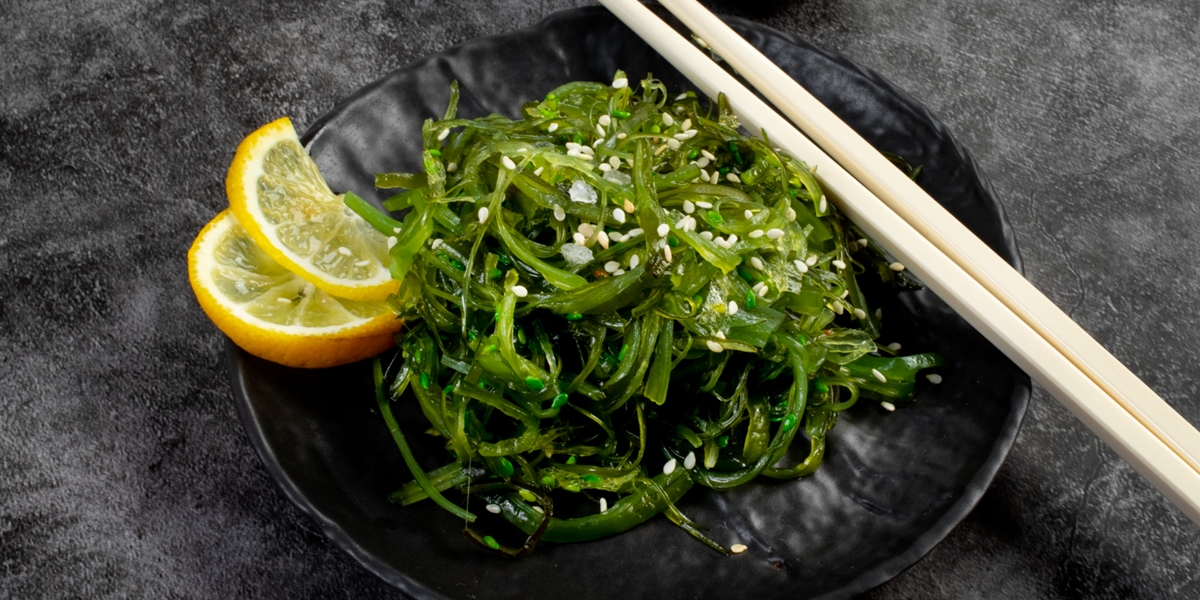Synopsis, Cast List, and Broadcast Schedule of the Drama 'UNDERCOVER HIGH SCHOOL'
UNDERCOVER HIGH SCHOOL, the latest action-comedy drama featuring Seo Kang Joon that you must watch.

Kapanlagi.com - Seaweed is not just a delicious food ingredient, but also a treasure for our health! One of its main advantages is its ability to alleviate thyroid gland swelling due to its abundant iodine content. Not only that, seaweed also plays an important role in regulating blood sugar levels and lowering the risk of diabetes, thanks to its rich fiber and natural antioxidants.
However, to maximize these incredible benefits, the processing method of seaweed is crucial. If the boiling process is done incorrectly, its nutritional content may decrease or its texture may become too soft. Therefore, it is important for us to know the right steps in boiling seaweed to ensure all its goodness is preserved.
So, how do you properly boil seaweed? Let’s check out the complete information below so you can reap the maximum benefits from this ocean superfood!
Seaweed contains a high amount of iodine, which is an essential mineral for the function of the thyroid gland. Iodine deficiency can lead to hypothyroidism and thyroid swelling, commonly known as goiter. By consuming properly boiled seaweed, the body receives adequate iodine to support balanced thyroid hormone production.
Additionally, the soluble fiber content in seaweed can help control blood sugar levels by slowing down the absorption of glucose into the bloodstream. This is particularly beneficial for diabetics or those looking to prevent blood sugar spikes after meals.
Seaweed also contains fucoxanthin compounds, which have been shown to have anti-diabetic effects by helping to improve insulin sensitivity and reduce excessive blood sugar levels.
"One way to meet iodine intake is by consuming seaweed. The types of seaweed that contain the highest iodine are nori, wakame, and kombu. Meanwhile, the fucoxanthin compounds in seaweed can reduce insulin resistance and stabilize blood sugar levels, as well as prevent type 2 diabetes," writes alodokter.com.
Swelling of the thyroid gland, known as goiter, is a health issue that requires immediate medical attention. The causes can vary, ranging from iodine deficiency to disorders of thyroid function, whether overactive (hyperthyroidism) or underactive (hypothyroidism).
To address this condition, treatment is tailored to the underlying cause, such as the use of thyroid hormone replacement medication like levothyroxine for hypothyroidism, or antithyroid medications like propylthiouracil and methimazole for hyperthyroidism. In some cases, further actions such as thyroidectomy, radioactive iodine, or percutaneous ethanol injection may be necessary.
Although there are claims about the benefits of natural treatments, such as consuming iodine-rich foods and fruits containing beta-carotene, it is important to remember that these cannot replace medical treatment. Therefore, consulting with a doctor is crucial to obtain an accurate diagnosis and appropriate treatment plan.
Diabetes, a chronic disease characterized by high blood sugar levels, can be prevented with simple yet effective measures. The key to avoiding type 2 diabetes lies in maintaining an ideal weight and adopting a balanced healthy diet.
Limit intake of sugar, saturated fats, and processed carbohydrates, while increasing fiber consumption from vegetables, fruits, and whole grains. Choose complex carbohydrates to support overall health.
Don't forget, exercising regularly for at least 30 minutes a day, as well as avoiding smoking and managing stress, is crucial for maintaining blood sugar balance. Regular blood sugar checks are also a smart step to detect diabetes risk early.
Although seaweed offers several health benefits, including addressing goiter and reducing diabetes risk, always consult with a doctor and adopt a healthy lifestyle as the main foundation of treatment.
Boiling seaweed with the right technique will help preserve its nutrients and produce a good texture for consumption.
The seaweed is ready to be used in various dishes, whether as a salad mix, in soups, or consumed directly with a squeeze of lemon for a fresher taste.
One of the challenges in processing seaweed is eliminating the natural fishy smell that often arises during cooking. Here are some ways to reduce that unpleasant aroma:
By applying these tips, boiled seaweed will taste better and will not be off-putting when consumed in various dishes.
Yes, the iodine content in seaweed helps support thyroid gland function and prevents swelling due to iodine deficiency.
Yes, the fiber and antioxidants in seaweed can help control blood sugar levels and improve insulin sensitivity.
Boil seaweed for only 5–10 minutes to keep its nutrients intact and its texture chewy.
(kpl/rmt)
Cobain For You Page (FYP) Yang kamu suka ada di sini,
lihat isinya
UNDERCOVER HIGH SCHOOL, the latest action-comedy drama featuring Seo Kang Joon that you must watch.
Check the disbursement schedule for BPNT social assistance 2025 phase one (January-March) and how to check the recipients through cekbansos.kemensos.go.id as well as the fund disbursement methods.
Learn how to boil soybeans and the benefits for heart health that should not be overlooked.
Dates, a nutrient-rich fruit, are believed to be good for the heart and blood sugar. But, is it necessary to boil them to maximize their benefits? Check out the complete explanation!
Agustina Wilujeng Pramestuti, Mayor of Semarang, has a total wealth of over Rp9.5 billion.
HPSN 2025 commemorates 20 years since the Leuwigajah landfill tragedy, encouraging collaboration between the government, society, and the private sector for sustainable waste management for a clean Indonesia.
Profile of Sumbul Touqeer, Indian actress playing IMLIE. Check out her career journey, achievements, and unique facts here!
BLACKPINK officially announces the world tour schedule for 2025. Check the list of cities and whether Indonesia is included in this tour.
Febby Rastanty and Enzy Storia look stylish in Paris, from the Eiffel Tower to the Metro. Check out their pictures and style here.
Syifa, Ayu Ting Ting's sister, celebrates her 3rd wedding anniversary on a romantic rooftop, filled with love and togetherness.
Bilqis looked charming while cosplaying as Maki Zenin during Literacy Week, leaving netizens in awe!
Sumbul Touqeer dazzles in various styles, from traditional attire to formal wear. Check out her extraordinary charm.